This post may contain affiliate links, meaning I can earn a small commission from items you purchase (at no cost to you).
Aging is wild. One day you’re doing handstands in the grass, the next you’re Googling “why does my knee sound like popcorn?” A lot of our aches and pains come down to inflammation—the bloating, brain fog, random rashes, and that lovely mid-afternoon crash. To combat it all, I created this anti-inflammatory smoothie recipe using plant-based ingredients that combat inflammation and are packed with nutrients.
Table of contents

Why You’ll Love It
- It tastes like a tropical treat. Earthy beets and kale get totally balanced out by sweet pineapple, mixed berries, and fresh orange—bright, tangy, and surprisingly smooth.
- It helps calm everyday inflammation. Each ingredient is chosen to support your joints, digestion, and energy—from ginger and berries to chia seeds and leafy greens.
- It’s a 5-minute reset. Perfect after a long run, a Costco marathon, or anytime your body needs a little extra love without any fuss.
- It’s nutrient-dense without being heavy. Fiber, antioxidants, and healthy fats come together in a refreshing, 16-oz blend your body will thank you for.
Save this Recipe for Later!
Enter your info below and I’ll send it straight to your inbox to save for later.
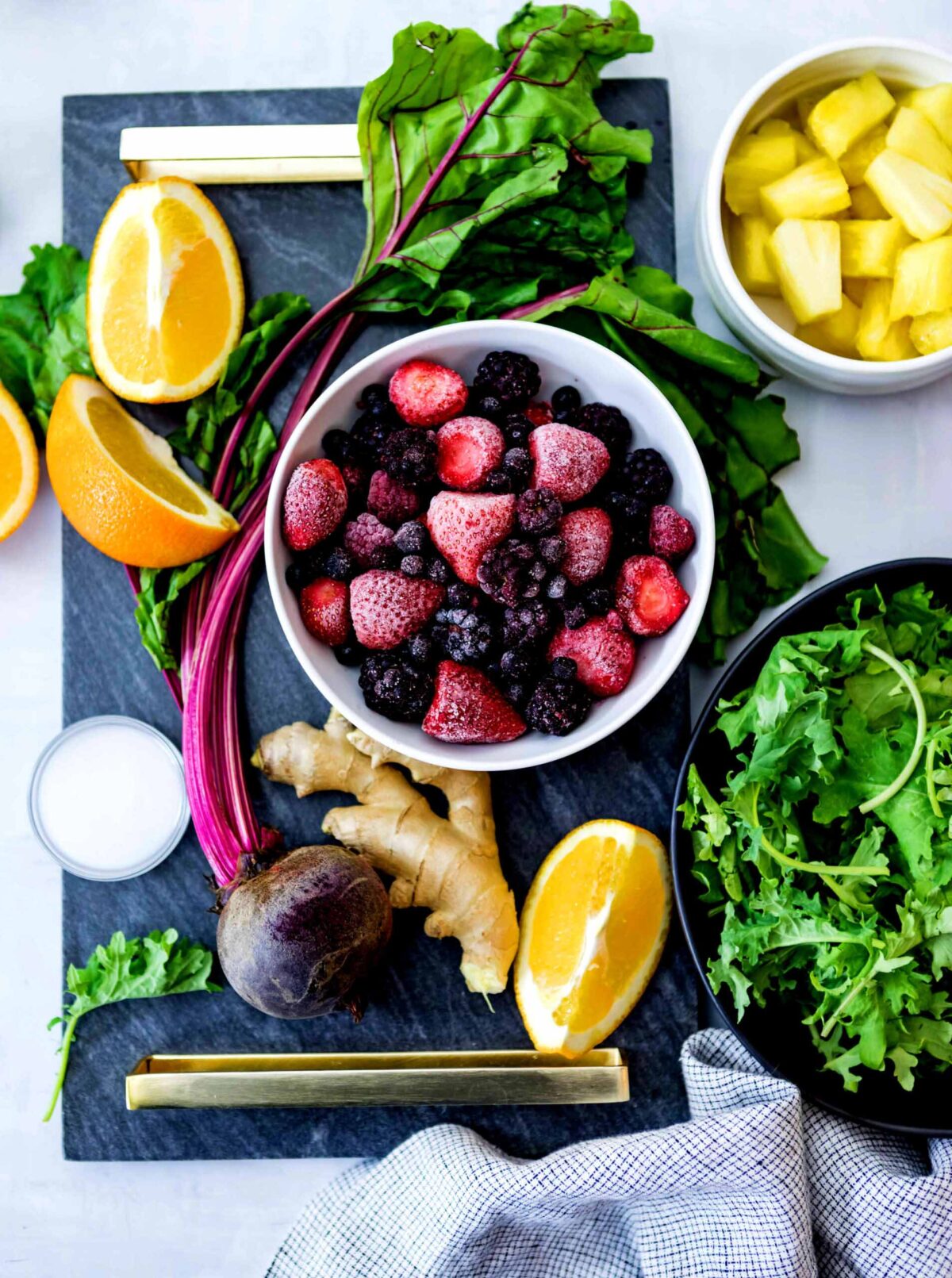
Ingredients You’ll Need
Sip on this smoothie with fresh beets, citrus fruits and anti-inflammatory ginger to recover from a Saturday morning shopping trip to Costco (never a good idea), a long run with your bestie or just another day living la vida loca. Here’s what goes into your glass, how each ingredient tastes and blends, plus the nutrition perks they bring to the party:
- Kale: Earthy and mildly grassy, kale makes a great base once blended properly. Blend it first with the water to avoid leafy bits. Kale is rich in antioxidants—especially flavonoids and vitamin C—which help reduce inflammation by neutralizing harmful free radicals.
- Beets: Sweet, earthy, and beautifully vibrant. Chop them small so your blender doesn’t struggle. Beets are loaded with betalains, powerful anti-inflammatory compounds that support heart health and may help lower blood pressure.
- Oranges: Bright, juicy, and naturally sweet, oranges add a silky texture and help balance the earthiness of the beets. Peel and remove seeds to avoid bitterness. Their vitamin C content helps reduce inflammation and boosts immune system by protecting cells from oxidative stress.
- Mixed Berries: Blueberries, blackberries, and raspberries bring tart, jammy sweetness and a thick, frosty texture. Their anthocyanins are some of the most powerful antioxidants around, helping reduce inflammation and protect against chronic diseases like heart disease and cancer.
- Pineapple: Tropical, sweet, and a little tangy, pineapple helps everything blend smoothly thanks to its juicy texture. It also contains bromelain, an enzyme known for its anti-inflammatory properties and its ability to support digestion—especially after physical stress or injury.
- Ginger Root: Warm, spicy, and bold in small amounts. Slice or grate it if you want a smoother finish. Ginger is packed with gingerols that provide strong anti-inflammatory effects and may help reduce muscle soreness and arthritis-related inflammation.
- Coconut Oil: Adds a light coconut flavor and a creamy finish. Melt slightly if solid so it blends seamlessly with the frozen fruit. Coconut oil contains lauric acid, a medium-chain fatty acid with anti-inflammatory and antimicrobial benefits that may support immune function.
- Chia Seeds: Mild, slightly nutty, and great for thickening your smoothie. Blend them in for smoothness or sprinkle on top for texture. Chia seeds are high in omega-3 fatty acids, which help reduce inflammation, support heart health, and add fiber and protein to keep you fuller longer.
Dietary Adjustments & Substitutions
Need to swap an ingredient or accommodate a food allergy? Click the button below for tailored suggestions just for you:
How to Make Anti-Inflammatory Smoothie
- Prep your produce. Wash and chop the kale and beets. Peel the orange and remove any seeds so it’s ready for the blender.
- Blend the base. Add the kale, chopped beets, peeled orange, and water to your blender. Blend on high until everything is completely smooth, scraping down the sides if needed.
- Add the fruit and flavor boosters. Toss in the frozen mixed berries, frozen pineapple, fresh ginger root, chia seeds, and coconut oil (if using).
- Blend until creamy. Blend again on high until the smoothie is thick, creamy, and no chunks remain. If it’s too thick, add a splash more water and blend again.
- Pour and enjoy. Pour into your favorite glass or jar. Garnish with extra chia seeds or a slice of orange if you’re feeling fancy, then sip right away for the biggest nutritional boost.
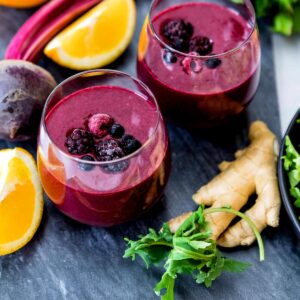
Anti-Inflammatory Smoothie
Ingredients
- ½ cup kale
- ½ cup beets peeled and chopped
- ¾ cup water
- ½ orange peeled
- 1 cup mixed berries frozen
- ½ cup pineapple frozen
- 1 teaspoon fresh gingerroot peeled
- 2 tablespoon chia seeds
- 1 teaspoon coconut oil optional
Instructions
- Add kale, beets, water and orange to blender container.
- Puree on high until the mixture is smooth. Scrape down the sides of chunks of the green stick to the sides of the blender.
- Add remaining ingredients and blend again on high until everything is well combined and smooth.
Helpful Tools
Notes
- Carrots can be substituted for the beets.
- Mango can be substituted for the pineapple.
- Baby kale or spinach can be used to make the smoothie less bitter.
- Use at least one frozen fruit for a refreshingly cool smoothie.
Nutrition
Did you make this recipe?
Leave a review for a chance to win signed copies of my cookbooks!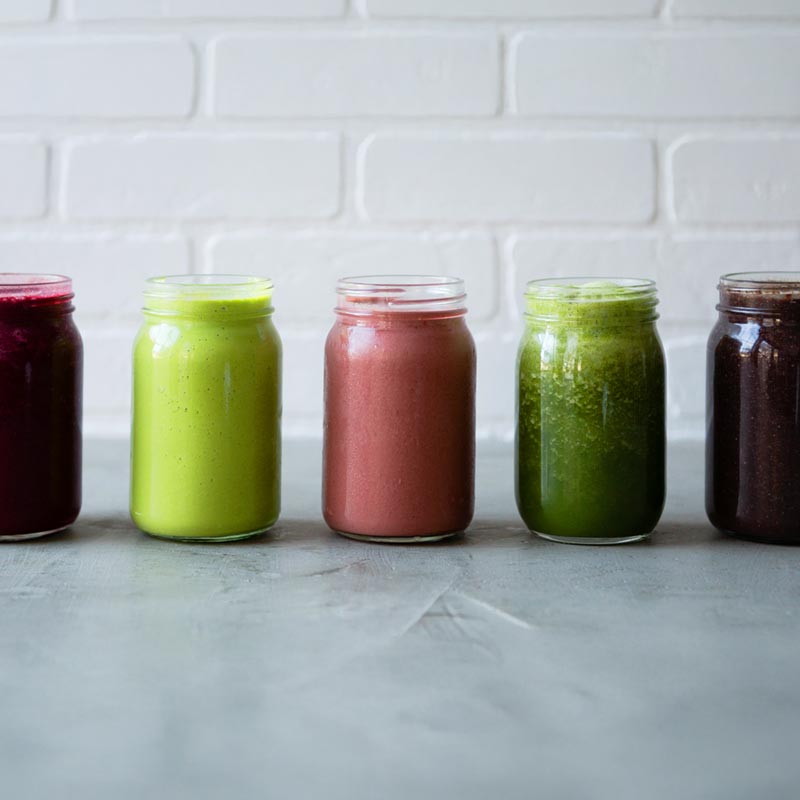
Free 5-Day Smoothie Reset
Get my smoothie recipes to boost energy, fight inflammation and kickstart weight loss—in just 5 minutes a day.
Common Questions
Yes—anti-inflammatory smoothies taste amazing when you balance earthy ingredients (like kale or beets) with naturally sweet fruits (like pineapple, orange, or berries). A little ginger or citrus helps brighten everything up too.
You can have this smoothie every single day, yet feel free to start with just a few times a week to see how your body adjusts. This can be a powerful addition to your routine if you’re working on reducing inflammation.
To mask the taste of beets or leafy greens, add more ginger, pineapple, orange, or berries to help cut the “earthiness.”
Yes, you can make this anti-inflammatory smoothie in advance to save time. Blend it the night before and refrigerate in a sealed jar (drink within 24 hours). Or try freezing meal prep smoothie packs with pre-measured ingredients and dump them into the blender when ready. Another options is to make smoothie cubes (freeze the smoothie in an ice tray) and re-blend with liquid when needed.

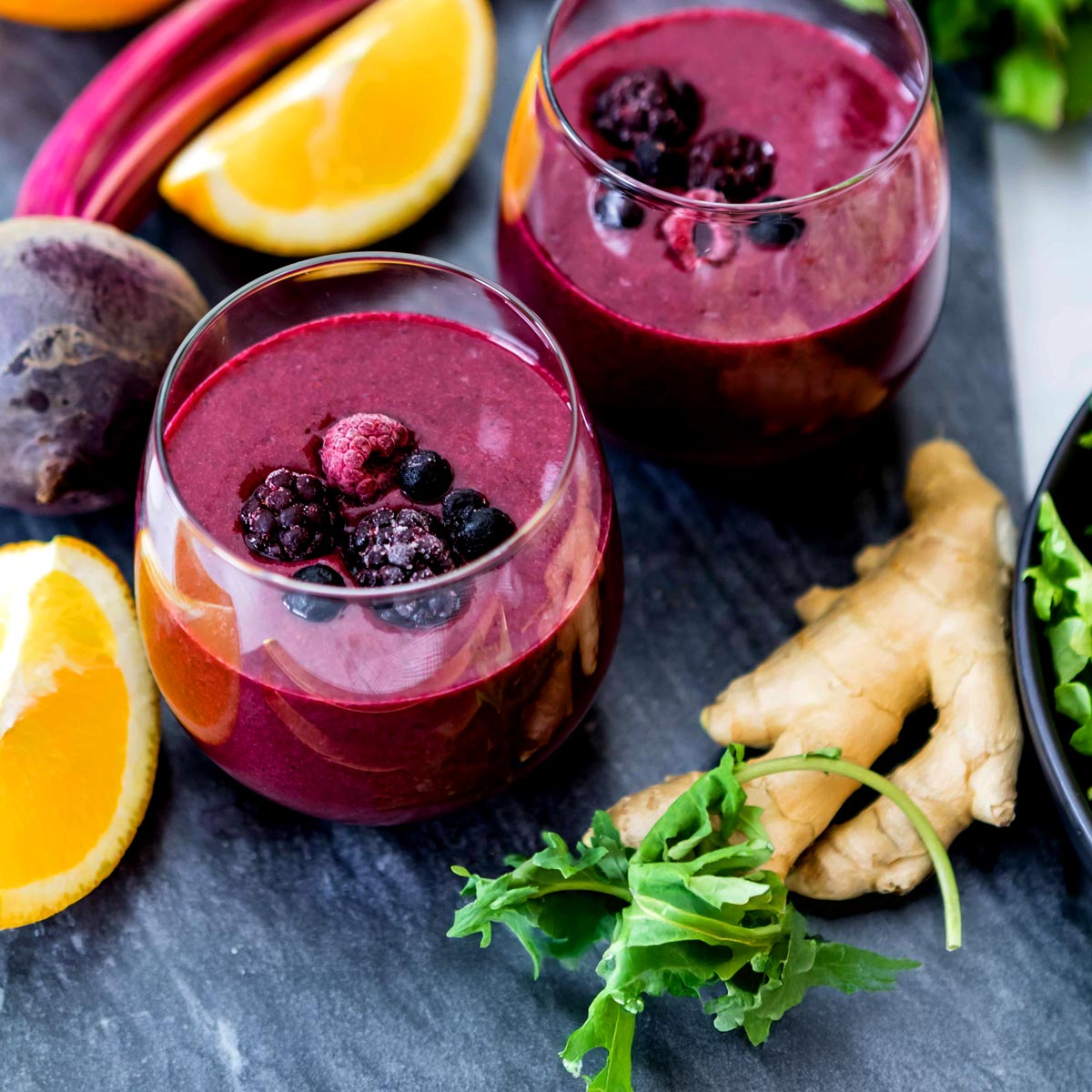

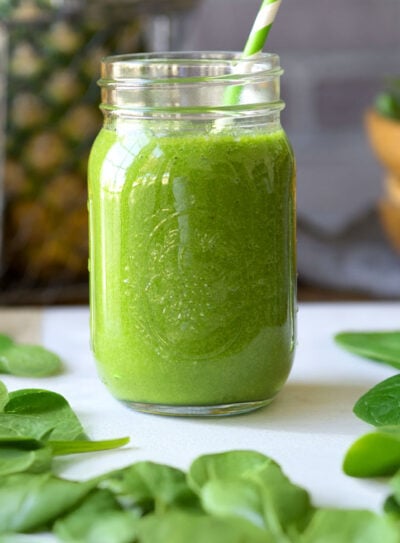
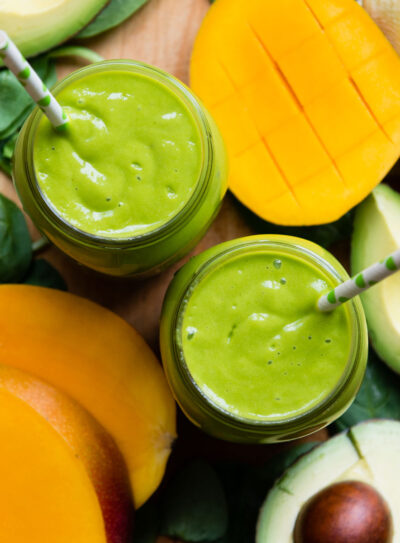
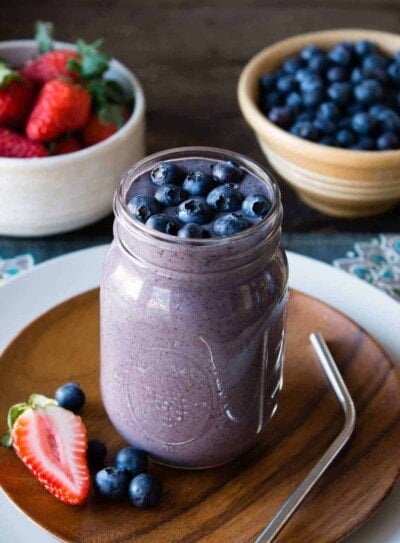
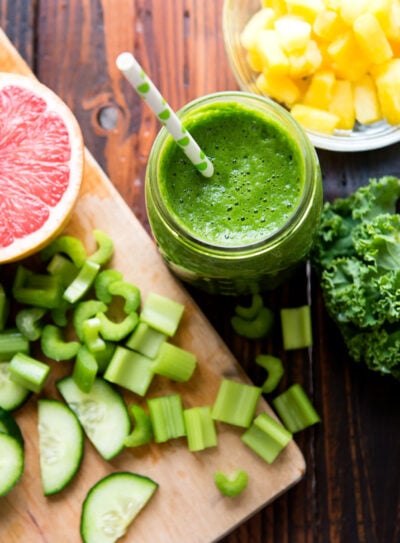
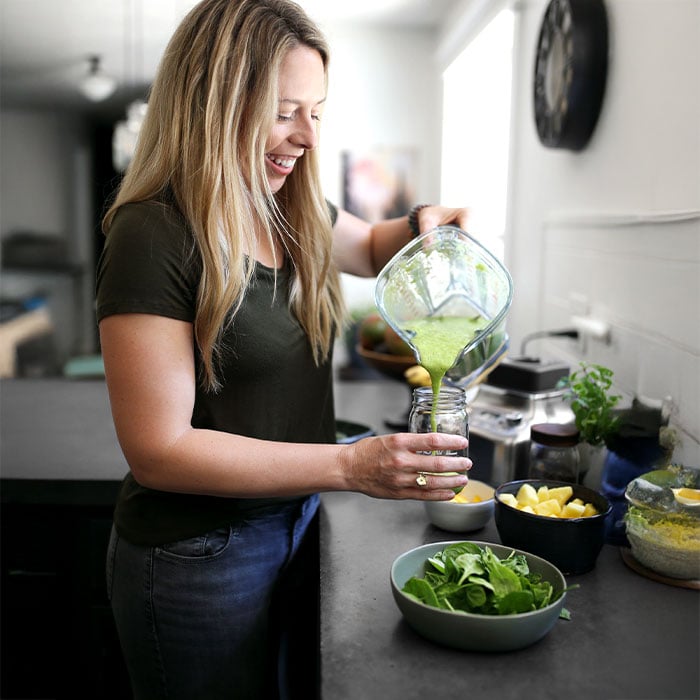









I loved this smoothie!! I used spinach instead of kale, half a banana instead of ginger, and carrots instead of beets!! I didn’t put coconut oil or chia seeds into it to make it more low calorie, it turned out great!
Hi Maya! So glad you loved this one! Spinach instead of kale is a great swap. Way to go!
Silly question but, should you cook the carrot if you’re substituting for the beets? Can’t wait to try!
Hi Jessica! That depends on what type of blender you are working with!
Can this sit in the fridge overnight?
Hi Chris! You can give it a try, yet it will likely separate and need a good shake. The frozen ingredients will also thaw, possibly making it watery.
Excellent recipe. I added another 1/2 cup of liquid because it was to thick for me.
It makes me happy to hear you liked this one, Teresa! Adding liquid is a great idea if it’s a little too thick for your liking.
HI, This may be a silly question, but do you cook the beets first?
Hey Robin, no question is silly! In this recipe we use raw beets, peeled and chopped.
Super delicious! I do have to add more water than the recipe says though, but not a big deal
Hi Megan! This one definitely turns out thick, yet I’m glad you love it!
Loved the taste of this smoothie so much! But I’m struggling with the texture. I find myself having to chew the smoothie as some of the ingredients are very fibrous along with the seeds from the berries. Do I just need to blend it longer and at a higher speed? Or do you have any other tips to avoid a chewy smoothie? Thank you! It really is delicious and the texture is probably just an error on my side!
So glad you enjoy the flavors of this smoothie! It’s a good one!
And yes! You’ve got it. Blending longer and at a higher speed can really smooth out your smoothies! I would also recommend blending the kale, water and beet first for 30 seconds – 1 minute before adding in the rest of the ingredients. Sometime the berries can be a little seedy, but I think blending longer and on a high power will give you some better results!
You may have to blend longer or consider changing blenders.
Get a vitamix
Can this sit in the fridge overnight?
Hi Chris, that’s a great question. I often make my the night before and store it in an airtight container in the fridge. I usually give it a good shake before I drink it. There may be a slight loss of nutrients, but it’s better than not having it at all. 🙂
Surprised by the nice sweet and sour taste, liked it!
So glad to hear you enjoyed this. Keep on blendin!
Hi new follower
I was wondering if I can swap coconut oil for almond butter. I do intermittent fasting and usually add a nut butter to my smoothies. Also can I swap the banana for half of a avocado so that I can lower the sugar intake? Thanks in advance.
Hey Lina! So glad you’re blending with us! Since this Anti-Inflammatory Smoothie is a bit more tropical leaning in taste, we’re not sure that almond butter would work – yet, if you enjoy the smoothie as-is, we think it’d be great to eat a few whole almonds (or other nut of your choice) on the side as part of your meal. Since this is one of our rare recipes that is banana free, def feel free to add some avocado to up the creaminess factor, as well as healthy fats, etc. Avocado could be used in place of the coconut oil as well. Happy blending!
Would beet root powder work as a substitute of raw/cooked beets?
Beetroot powder is an excellent swap in for smoothies and 1 tsp usually equals about one beet. However, you’ll be consuming less fiber with this substitution, so that’s something to keep in mind.
Seriously so good! My kids even drank them with no complaints!
Love this smoothie!!
Love this smoothie and how good it makes me feel!
Hi, Jen.
Does the beet need to be pre-cooked or can we use raw beet?
Thanks & be well!
Ari
Excellent question Ari! It’s gonna be up to you here. You can use either cooked (steamed is best) or raw beets. Cooked beets you’ll find slightly sweeter + easier to peel. Raw beets will be earthy in flavor.
Why don’t you send to Australia?MAREE
Hi Maree! Currently the postal service is not allowing us to ship to Australia and several other countries due to covid protocols. We’re super sad about it, yet are continuing to check the status and will start shipping to Australia as soon as we’re able.
Can you freeze these ingredients without th water and then use at a later date and just add the water when needed.
Absolutely, Moira! Great question! For Jen’s demo on how to do this, check out her DIY Frozen Smoothie Packs.
Hi I haven’t tried it before but I do want to started it yet but I can not have coconut due to my allergic reaction towards it what can I substitute with it instead and still get the same results.
Hi Tina! So sorry we missed your question earlier! You can use another mild oil like grapeseed oil. Since other oils are in liquid form, it might be best to reduce the amount slightly for this recipe. Another swap could be applesauce. Let us know what you try and what you liked!
Will turmeric be a good substitute for ginger and taste as good? Can’t stand ginger.
Love this question Brian! And you’re not alone. Ginger seems to be a love it or hate it kinda thing. While turmeric has even more anti-inflammatory properties, we’re not sure how it would do taste-wise in this recipe. If you give it a blend, def let us know what you think!